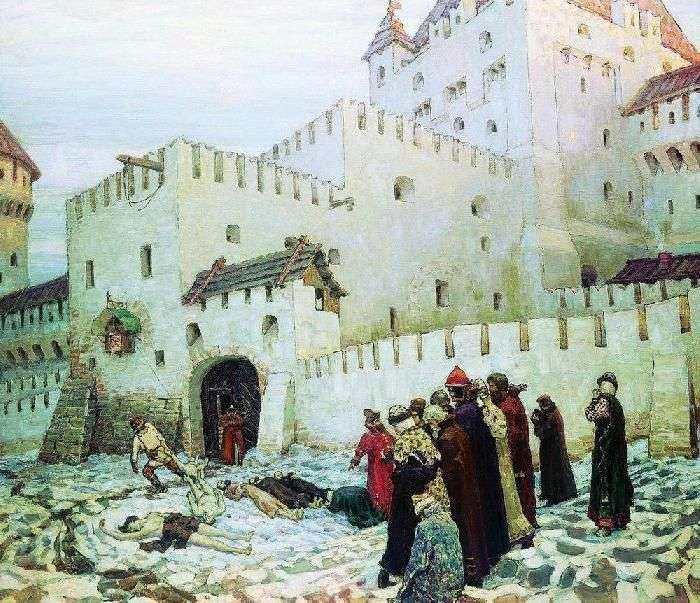
One of the most dramatic paintings by Apollinaria Vasnetsov is his famous painting “The Moscow Shack: The End of the 16th Century”, performed in 1912 and won in 1913 a gold medal at the International Exhibition in Munich. The action takes place near the Kremlin wall, near the Konstantin-Elenin Tower.
In the 16th century, in the stepped annexes above the moat, there was a Moscow prison – a place of confinement and torture of people. From the gates of the dungeon the executioner pulls out the corpses of people who could not stand torture. Relatives stand, seized by despair and fear, recognizing or fearing to find out among the tortured loved ones whom they will give to the jailers for burial.
All this happens when the early ray of the sun miraculously gilds the top of the tower and gently pinkens the morning clouds. Thus, the artist, as it were, contrasts beauty and pacification in nature with tragic action, human cruelty on earth.
 At dawn at the Resurrection Bridge. The end of the XVII century by Apollinarius Vasnetsov
At dawn at the Resurrection Bridge. The end of the XVII century by Apollinarius Vasnetsov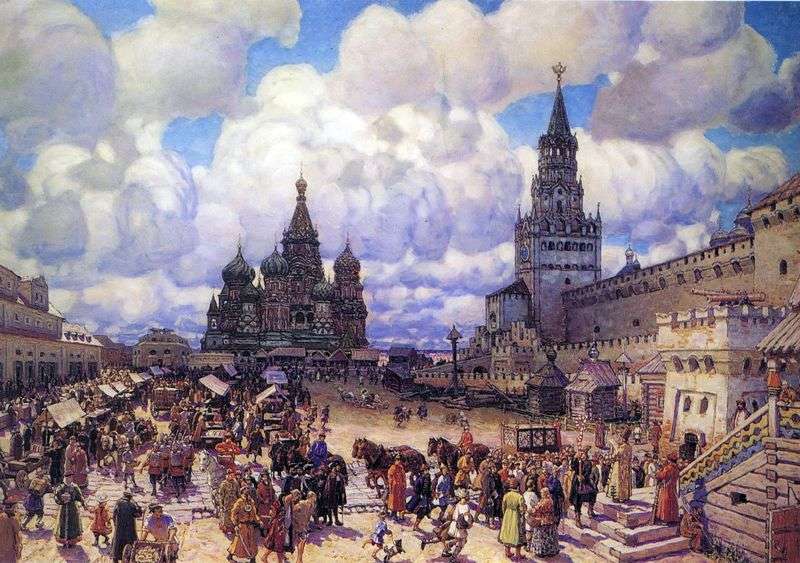 Red Square in the second half of the XVII century by Apollinarius Vasnetsov
Red Square in the second half of the XVII century by Apollinarius Vasnetsov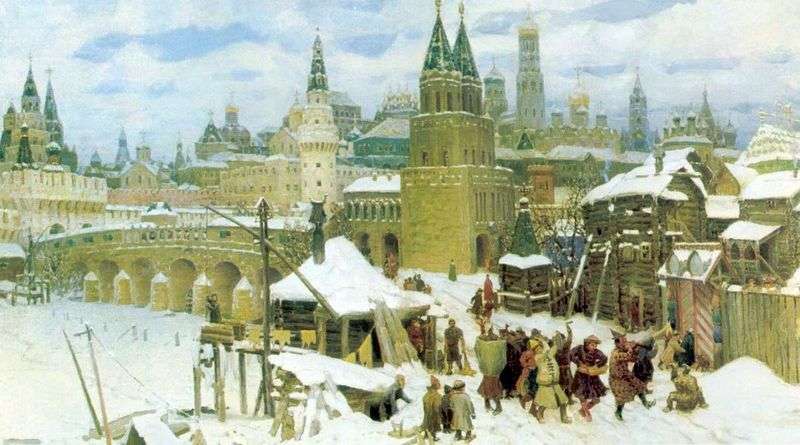 The heyday of the Kremlin. All-Svyatsky Bridge and the Kremlin at the end of the XVII century by Apollinarius Vasnetsov
The heyday of the Kremlin. All-Svyatsky Bridge and the Kremlin at the end of the XVII century by Apollinarius Vasnetsov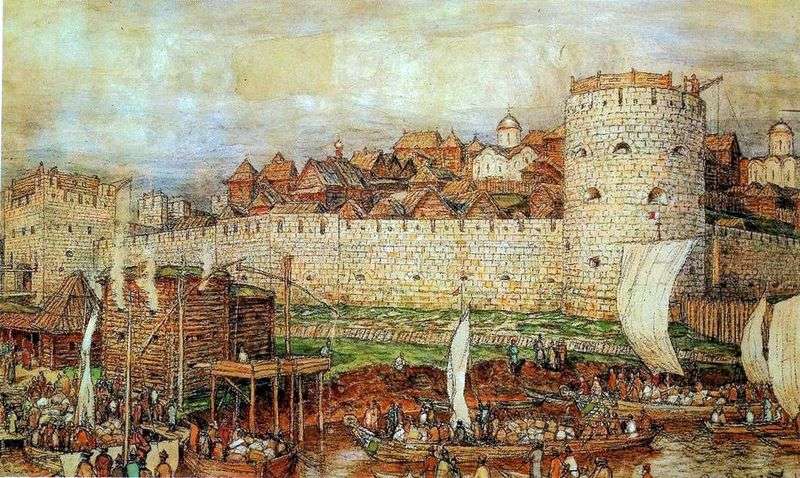 The Moscow Kremlin with Dmitri Donskoi by Apollinarius Vasnetsov
The Moscow Kremlin with Dmitri Donskoi by Apollinarius Vasnetsov The Square of Ivan the Great in the Kremlin. XVII century by Apollinarius Vasnetsov
The Square of Ivan the Great in the Kremlin. XVII century by Apollinarius Vasnetsov Donjon de Moscou. La fin du XVIe siècle (porte Konstantin-Eleninsky du donjon de Moscou au tournant des XVIe et XVIIe siècles) – Apollinariy Vasnetsov
Donjon de Moscou. La fin du XVIe siècle (porte Konstantin-Eleninsky du donjon de Moscou au tournant des XVIe et XVIIe siècles) – Apollinariy Vasnetsov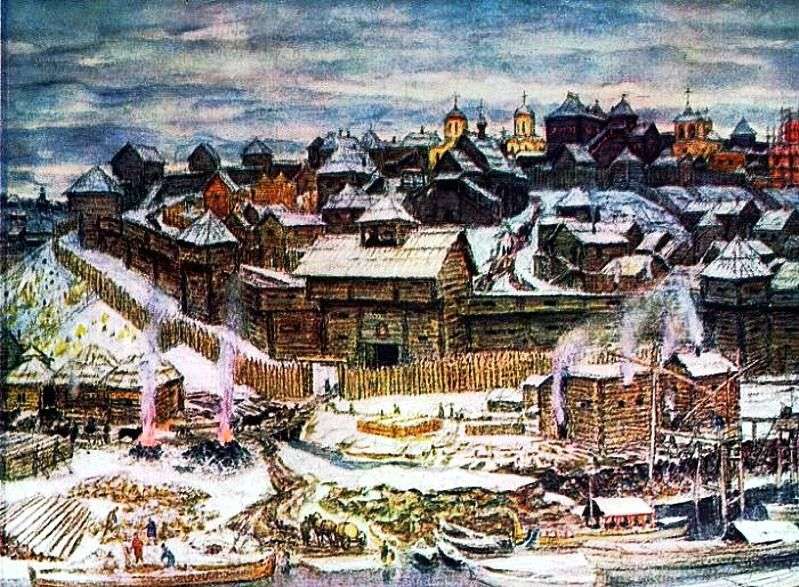 The Moscow Kremlin under Ivan Kalita by Apollinarius Vasnetsov
The Moscow Kremlin under Ivan Kalita by Apollinarius Vasnetsov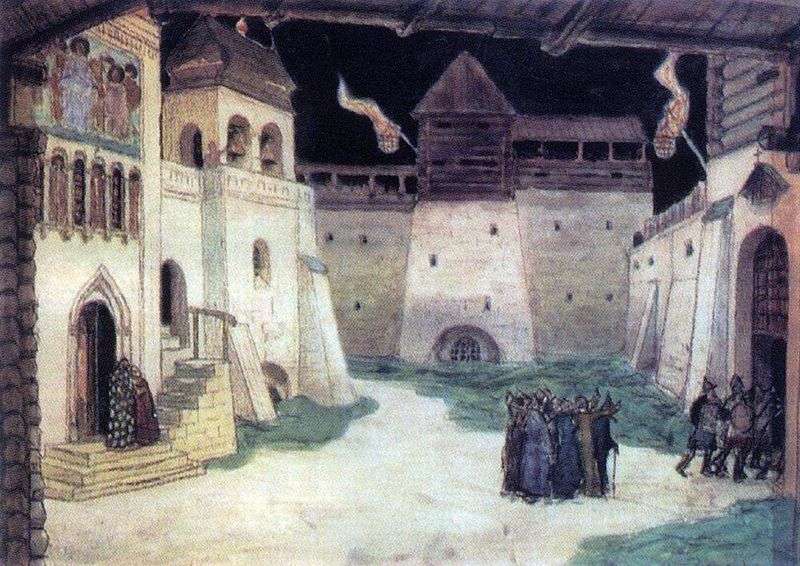 Area in the besieged Kitezh by Apollinarius Vasnetsov
Area in the besieged Kitezh by Apollinarius Vasnetsov